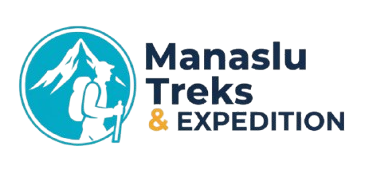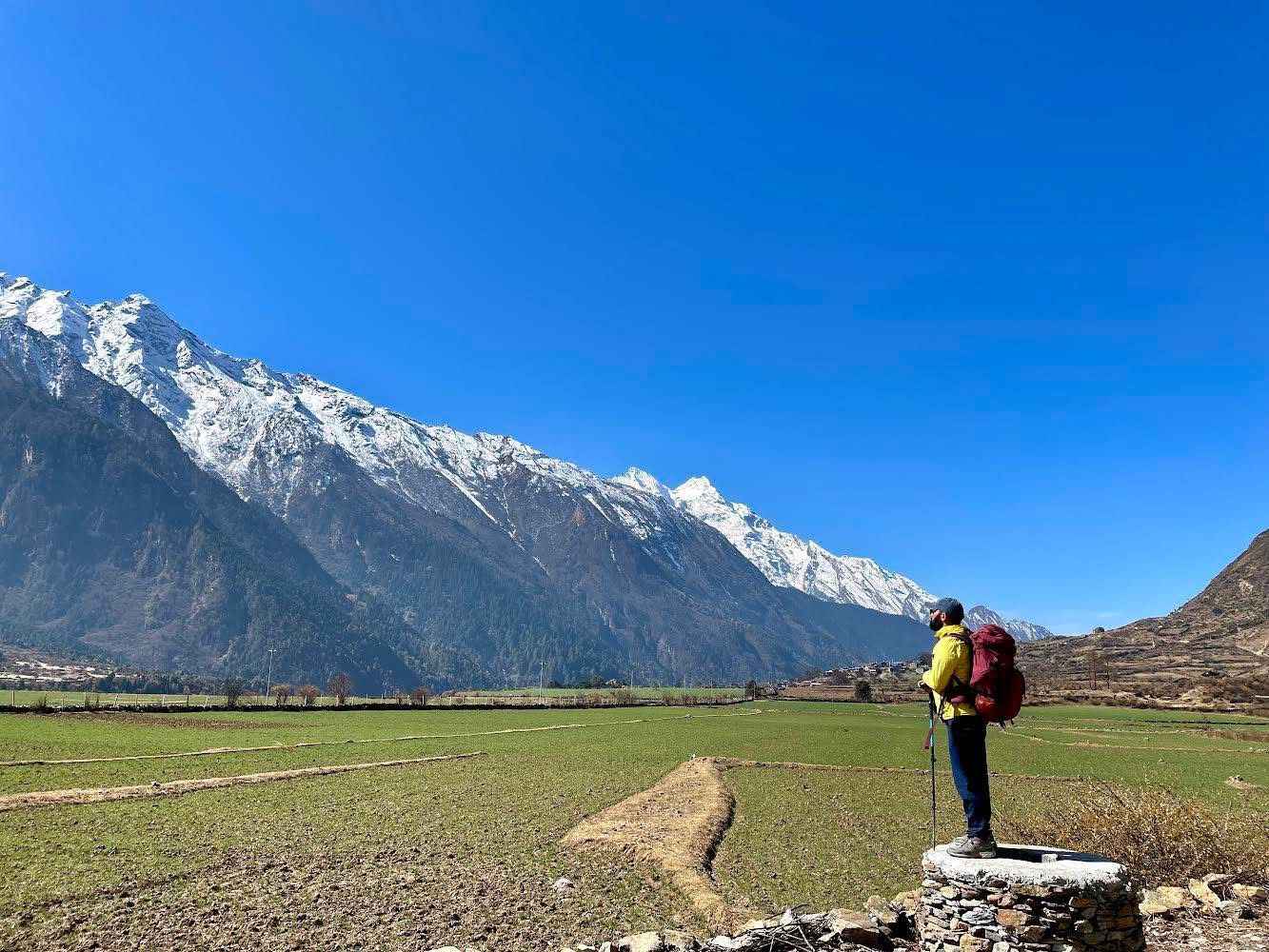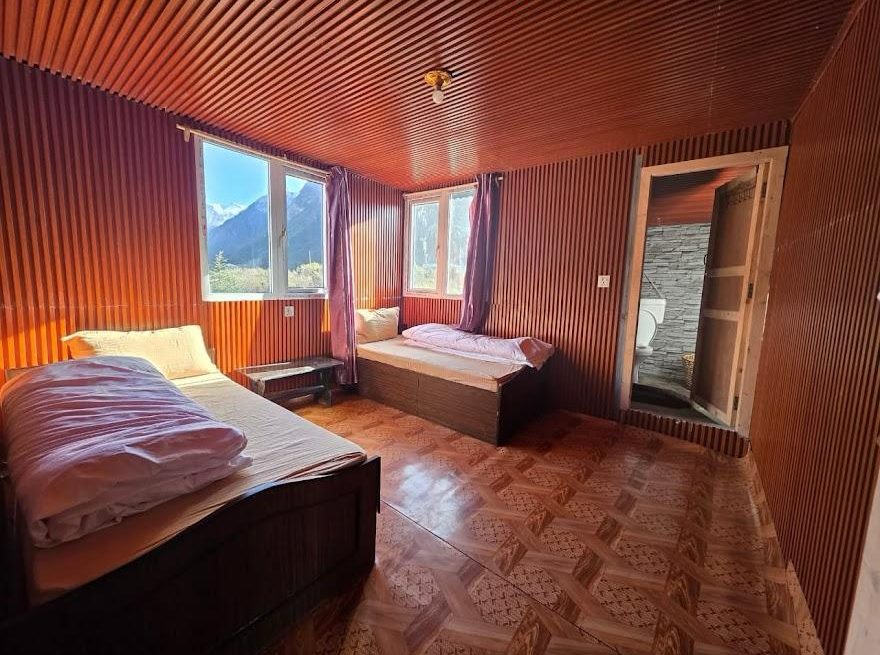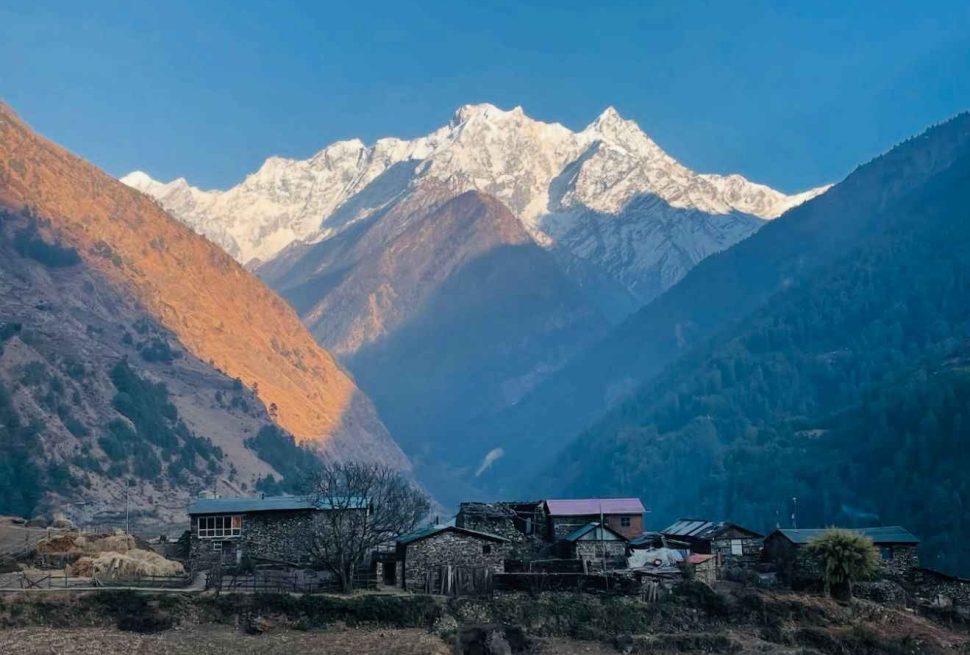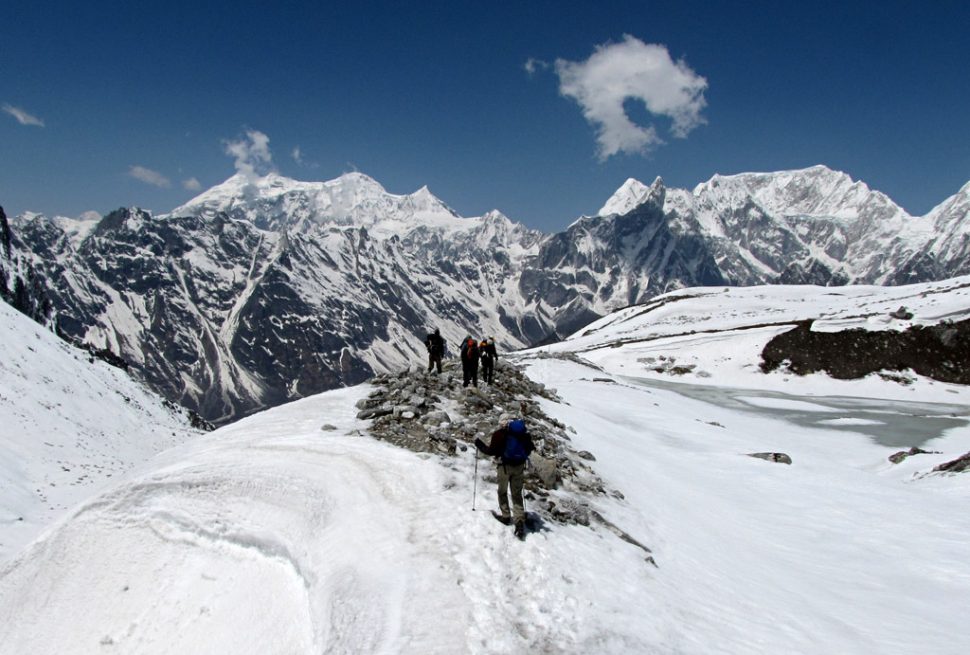When people start planning the Manaslu Circuit, one of the first questions that comes to mind is about the cost. The Manaslu Circuit Trek cost is not just a number; it depends on many factors like permits, guides, accommodation, food, and transportation. Since the trek is in a restricted region, independent trekking is not allowed, which means you must hire a registered guide and arrange the right permits. This adds to the overall budget but also ensures safety and a smoother experience.
Compared to the Everest Base Camp or Annapurna routes, the Manaslu Circuit is less crowded and offers a more authentic Himalayan adventure. However, because of its remoteness and strict regulations, the cost structure can feel a little different from other treks in Nepal. In this article, we will look closely at the Manaslu Circuit Trek cost for 2025, explain the main expenses, and share practical tips on how to plan your budget wisely. Whether you are travelling with a group, hiring a private guide, or looking for a full package, this guide will give you a clear idea of how much you should expect to spend on this once-in-a-lifetime travelling journey.
Package Price — Manaslu Treks & Expedition
All-Inclusive • 14 Days| Travellers | Price / Person |
|---|---|
| 1 | USD 1,350 |
| 2 | USD 1,250 |
| 3–5 | USD 1,200 |
| 6–10 | USD 1,150 |
Manaslu Circuit Trek 14 days cost — all included: permits, ground transport, licensed guide, porter support, tea house meals and rooms. Please confirm exact inclusions before booking.
Manaslu Circuit Permit Cost
Trekking the Manaslu Circuit requires several permits because the region is classified as a restricted area. These permits are mandatory and must be arranged through a registered local trekking agency. Here is a clear breakdown of the costs:
Restricted Area Permit (RAP) for Manaslu
- September to November: USD 100 per person for the first 7 days, plus USD 15 for each additional day
- December to August: USD 75 per person for the first 7 days, plus USD 10 for each additional day
Manaslu Conservation Area Permit (MCAP)
- NPR 3,000 per person (around USD 25)
Annapurna Conservation Area Permit (ACAP)
- NPR 3,000 per person (around USD 25)
Local Municipality Fee
- NPR 1,000 per person, payable at the Jagat checkpoint
Tsum Valley Restricted Area Permit (if visiting Tsum Valley)
- September to November: USD 40 per person for the first 7 days, plus USD 7 for each additional day
- December to August: USD 30 per person for the first 7 days, plus USD 7 for each additional day
Unlike other popular trekking routes, you do not need a TIMS (Trekkers’ Information Management System) card for the Manaslu Circuit Trek. All permits are issued only through registered trekking agencies, so you cannot obtain them independently.
Transportation Costs for the Manaslu Circuit Trek
Transportation plays a major role in calculating the overall 14-day Manaslu Circuit trek cost, since there are no flights connecting Kathmandu directly to the starting point. The trek usually begins in Machha Khola, a quiet village about 160 kilometres north-west of Kathmandu, and ends in Dharapani. All travel to and from the trailhead is done by road, and your choice of transport can significantly influence your total budget.
Kathmandu to Machha Khola
The journey from Kathmandu to Machha Khola takes around 7 to 9 hours, depending on the vehicle you choose.
Public Bus (USD 10–15 per person)
Public buses depart early in the morning from Kathmandu. They take 8 to 9 hours to reach Machha Khola and are the most budget-friendly option. However, they can be crowded, bumpy, and slower. This option is ideal for trekkers trying to keep their Manaslu trek price as low as possible.
Private Jeep (USD 200–250 per vehicle, up to 7 people)
For a faster and more comfortable trip, private jeeps are the best choice. The ride takes about 6 to 7 hours, offers more flexibility in departure times, and allows you to stop for breaks along the way. This is especially convenient for groups or trekkers who prefer comfort over cost savings.
Returning from Dharapani to Kathmandu
Once you finish the trek in Dharapani, you’ll need to arrange transport back to Kathmandu, usually via Besisahar.
Local Jeep Dharapani to Besisahar (USD 20–25 per person)
This stretch takes 4 to 5 hours by local jeep. It’s reliable and fairly comfortable, helping you connect with onward travel to Kathmandu.
Public Bus Besisahar to Kathmandu (USD 10–15bus from–15 per person)
From Besisahar, you can catch a public bus back to Kathmandu. The ride takes 6 to 7 hours and is the most economical way to end your trek.
Private Jeep Dharapani to Kathmandu (USD 300–350 per vehicle)
If you prefer a direct and more comfortable return, you can hire a private jeep from Dharapani all the way back to Kathmandu. This is the quickest and most convenient option, perfect for groups or trekkers who want to avoid switching vehicles.
Important Notes
- Avoid walking the dusty road sections between Dharapani and Besisahar; taking a jeep is safer and more comfortable.
- The transportation cost by local bus is often included in trek packages if you book through a trekking agency.
- Roads are a mix of paved and off-road tracks, so travel times can vary depending on weather and road conditions.
Ready to plan your 14 days Manaslu Circuit Trek
Guide and Porter Cost for the Manaslu Circuit Trek
Hiring a licensed guide through a registered local trekking agency is not optional on the Manaslu Circuit Trek—it is a government regulation. A guide is not only required for securing the restricted area permits but is also invaluable for your safety and cultural experience along the trail.
Why a Trekking Guide is Mandatory in the Manaslu region?
To trek in the Manaslu region, you must be in a group with at least one other person and a government-licensed trekking guide. Permits cannot be issued to solo trekkers or freelance guides. This means you need to hire a guide in Kathmandu through an authorised operator before beginning your trek.
Trekking Guide Costs
- An experienced English-speaking guide generally costs USD 30 to 40 per day, which includes their meals, accommodation, insurance, and transportation.
- A guide-porter, who can also help carry a light load while guiding, costs around USD 25 to 30 per day.
Why It’s Worth It?
A good guide enhances your trek by ensuring safety on challenging terrain, assisting with logistics, and sharing cultural and historical insights of the Manaslu region. Most guides are also trained in first aid and emergency response, making them a crucial part of your journey
Porter Cost for the Manaslu Circuit Trek
While hiring a porter is not mandatory, it can significantly improve your trekking experience. The Manaslu Circuit involves long days at high altitude, and carrying a heavy backpack can quickly drain your energy. Hiring a porter allows you to trek more comfortably while directly supporting the local economy.
Porter Costs
- The cost of hiring a porter is usually USD 20 to 25 per day.
- A porter can carry 20–22 kg, which is often enough to handle the bags of two trekkers if packed efficiently.
Benefits of Hiring a Porter
- Reduces physical strain and allows you to enjoy the trek more fully.
- Helps you adjust better to the high altitude by conserving energy.
- Provides income and employment opportunities for locals in remote mountain communities.
Combined Guide and Porter Costs
When planning your Manaslu Circuit trek cost, it’s important to include both guide and porter expenses. For a standard 14-day trek, hiring:
- A guide at USD 30 per day will total around USD 420.
- A porter at USD 22 per day will total around USD 300.
Altogether, you can expect to spend approximately USD 700–750 for guide and porter services on a two-week Manaslu trek. If you book through a trekking agency, packages often include one licensed guide per group and one porter for every two trekkers, with all costs (salary, food, accommodation, and insurance) already covered in the package price.
Food and Accommodation Costs on the Manaslu Circuit
Food and accommodation make up a big part of the Manaslu Circuit trek cost, and it’s important to understand what to expect before starting the journey. Unlike the Annapurna or Langtang regions, where prices can sometimes be negotiated, accommodation costs on the Manaslu trail are fixed. Tea houses are the main form of lodging, and they also provide meals, meaning you’ll usually eat where you sleep.
On average, you should budget USD 30 to 40 per day to cover three meals and a bed. Carry enough Nepali rupees in cash since there are no ATMs or card payment facilities on the trail. Some tea houses may accept foreign currency, but usually at poor exchange rates.
Accommodation Costs
- Basic Room: USD 5 to 7 per night (shared facilities, simple bed, and blanket)
- Prices are non-negotiable, and the quality decreases slightly as you go higher in altitude.
Meal Costs
- Breakfast: USD 5 to 7 – common choices include Tibetan bread, omelets, pancakes, porridge, oats, or muesli.
- Lunch and Dinner: USD 6 to 10 per meal – typical options include Dal Bhat (the famous all-you-can-eat Nepali set meal), noodles, pasta, soup, Mo:Mo, and fried rice.
- Desserts/Snacks: USD 2 to 4 – such as pudding, chocolate bars, or yak cheese.
Dal Bhat is the most popular choice, not only because it’s filling and freshly made, but also because it comes with unlimited refills. For most trekkers, it becomes the fuel that powers them through long days in the mountains.
Daily average food cost ranges from USD 25 to 30, depending on your appetite and food choices.
Additional Expenses
- Hot Showers: USD 2.5 to 4 per shower (solar heated or bucket showers in higher villages).
- Device Charging: USD 1 to 2 per device per hour.
- Wi-Fi: USD 5 to 8 per day in selected villages.
Drinks and Water Costs
Since everything is carried up by mule or porter, drinks can be surprisingly expensive.
- Tea or coffee: USD 1 to 3 per cup (better to carry your own instant coffee if you prefer).
- Soft drinks or energy drinks: USD 3 to 5.
- Beer: Around USD 7 per bottle.
- Mineral water: USD 2 to 3 per bottle.
Buying bottled water every day quickly adds up, so it’s smarter and cheaper to bring your own reusable bottle and use water purification tablets or filters. You can refill bottles at tea houses or local taps along the way.
Travel Insurance for the Manaslu Circuit Trek
Travel insurance is compulsory for anyone trekking in the Manaslu region. The Himalayas are unpredictable, with risks ranging from sudden weather changes to Acute Mountain Sickness (AMS) or injuries on the trail. In emergencies, helicopter evacuation may be required to transport you to a hospital in Kathmandu, which can cost thousands of dollars if not covered by insurance.
For a 30-day policy covering treks above 6,000 meters, the cost of trekking insurance usually ranges between USD 150 and 250. The exact premium depends on your age, nationality, and the duration of your trip.
Important tip: Always make sure your insurance specifically covers high-altitude trekking and helicopter rescue, as some standard travel insurance policies exclude these services.
Additional Expenses to Consider
Beyond the main costs such as permits, guides, food, and lodging, there are a few other expenses you should factor into your Manaslu Circuit trek cost.
1. International Flights
Your airfare to and from Kathmandu is often the largest single extra cost, depending on your departure location and season of travel.
2. Nepal Visa
Tourist visas for Nepal are available on arrival at Tribhuvan International Airport in Kathmandu. Current visa fees are:
- USD 30 for 15 days
- USD 50 for 30 days
- USD 125 for 90 days
3. Wi-Fi and Communication
- Many tea houses now provide Wi-Fi, and the total cost over a 14-day trek is usually around USD 20.
- A better option is to buy a Nepal Telecom SIM card, which works in most parts of the Manaslu region and provides both data and call services at a reasonable price.
4. Snacks and Personal Treats
- Chocolate, Mars bars, and other imported snacks on the trail are expensive. Expect to spend around USD 50 if you buy them along the trek.
- A cost-saving idea is to bring your favorite snacks from your home country or purchase them in Kathmandu before heading to the mountains.
5. Other Extras
- Tips for guides and porters (around USD 150–200 total for the trek, depending on service quality).
- Souvenirs, trekking gear, or personal shopping in Kathmandu.
- Optional luxuries such as hot showers (USD 2.5–4), charging devices (USD 1–2 per hour), or energy drinks and alcohol on the trail.
Cost Breakdown (14 Days)
Quick estimate for the full trip
| Category | Details | USD |
|---|---|---|
| Permits | RAP, MCAP, ACAP, local fee | 200–250 |
| Transport | KTm↔Machha Khola, Dharapani↔KTm | 60–120 bus / 450–600 jeep |
| Guide | Licensed, 14 days | 420–560 |
| Porter | Optional, up to 22 kg | 280–350 |
| Food & Stay | Tea houses, 14 days | 420–560 |
| Insurance | High altitude + heli | 150–250 |
| Wi-Fi & SIM | Wi-Fi ≈20 total; NTC SIM works most areas | 20–30 |
| Snacks & Drinks | Buy in KTm to save | 40–60 |
| Visa | 30-day tourist visa | 50 |
| Tips | Guide & porter | 150–200 |
| Misc. | Showers, charging, souvenirs | 50–80 |
Many tea houses have free Wi-Fi in some villages. A Nepal Telecom SIM gives coverage in most sections.
Package Price
Manaslu Treks & Expedition
| Travellers | Price / Person |
|---|---|
| 1 | USD 1,350 |
| 2 | USD 1,250 |
| 3–5 | USD 1,200 |
| 6–10 | USD 1,150 |
Includes permits, ground transport, licensed guide, porter support, tea house meals and rooms. Confirm exact inclusions before booking.
